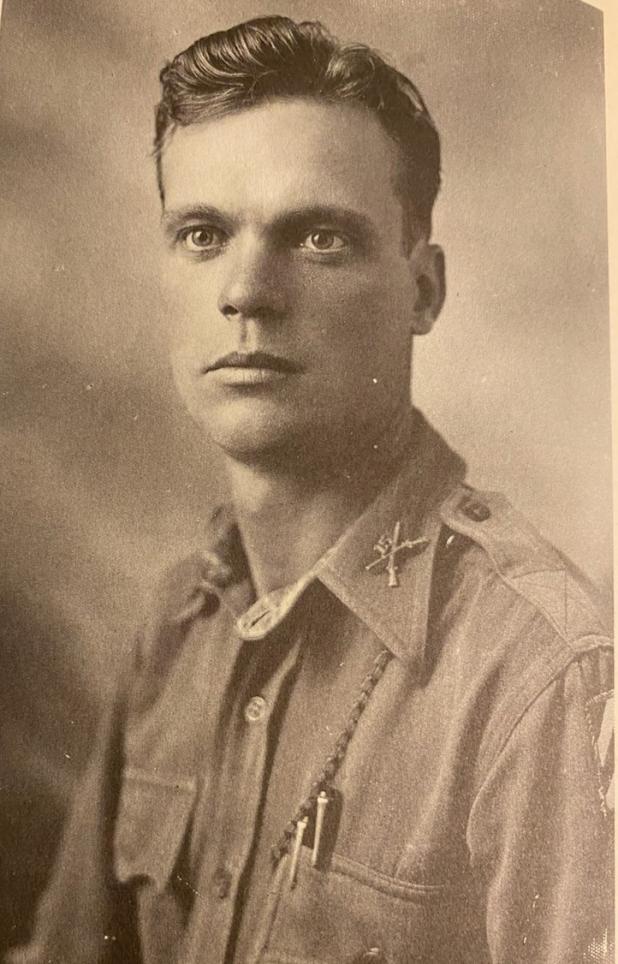
A name that many will not know: Dachau
When you sit down and start to research something, or someone to write about, the stuff you find may not be what you wanted to find. This is going to be one of those articles. This story is not for the faint of heart. Please use caution when reading this.
The person I started researching for this article led me to a place most of you won’t know, or not have a lot of knowledge of: Dachau, Germany.
Vice President J.D. Vance and Mrs. Vance just visited Dachau, Germany, and laid a memorial wreath on graves at Dachau. Mr. Vance then stated that what happened in Dachau would never happen again. I hope and pray that nothing like this is ever present again on this earth. Just one of the grave sites held the ashes of over 10,000 people. One gravesite, There were many, many more gravesites.
The story of the man who helped liberate Dachau comes to us through a friend of mine – Cleve, a guy who makes all of my custom leather holsters and leather goods. Cleve is halfway between Graham and Loving on State Highway 16 North at “Jake’s Station” This is the story of Cleve’s grandfather, Lt. Col. Donald E. Downard, born on Feb. 11, 1914, in Harland, Kansas. He attended schools in Oklahoma and Arkansas and then attended college in Mountain Home, Arkansas. He worked with the Civilian Conservation Corps before joining the Army, where he served this country for over 18 years.
Donald was a combat veteran long before he was assigned to the “Rainbow” The Rainbow 42nd Infantry Division was formed during World War I and was made up of 26 different National Guard units and the Guard from the District of Columbia. Each unit had its flag and when it was all combined, the unit had flags of every color of the rainbow. And from then on the 42nd was known as the Rainbow.
In December 1944, the Rainbow went into battle in the Alsace area. It turned back the final German offensive (code name Nordwind). It then breached the Siegfried Line, then on across the Rhine River to and through Wurzburg, Schweinfurt, Furth, and Donauworth, and then stopped along the way to liberate the Dachau concentration camp.
On April 29, 1945, the forward-moving battalions of the Rainbow Division were marching toward Munich. They had survived four months of battle. The war would end soon, then came the call to Dachau. Horrors beyond any human imagination. There were estimates of over 200,000 prisoners of war in that camp alone. It is estimated that 32,000 died from starvation and murder inside the fence. The numbers do not tell of the death marches, death trains, and the gas chambers outside of the fence.
People were left to starve and die. Bodies piled on in the snow. Thirty-nine box cars with 50, 60, or more bodies in each. Dead men, women, and children lying along the railroad tracks, outside the barracks, near the mass grave pits, and on this day, a total of 2,3I0 bodies outside in the snow.
While they were checking boxcars, the Rainbow Division soldiers saw a hand barely moving under a snow-covered pile and pulled its owner out.
Lt Col Downard carried the man to safety and to life. Donald carried the poor soul to his Jeep and then had his driver take them to the medical folks. On their way, the Jeep’s crew came under fire and the driver turned too quickly and flipped the Jeep on its side. Don woke up in the medical tent alongside the poor soul he had pulled out of the pile. Don survived with a concussion and some scrapes. The poor soul was no worse for the ride and went on to survive.
“I thank God and all of his angels his angels from the Rainbow Division,” the man, Gleb Rahr, said.
After his liberation, Mr. Rahr went to study at the Hamburg University. He worked for a Russian publishing house in Frankfurt, Germany. He was a correspondent for that institution for four years in Tokyo. He was also a lecturer in Russian history and culture for the Far East Department of the University of Maryland. In 1975, he went to work for Radio Free Europe. He retired and still worked freelance for that station. He was born in Moscow on Oct. 3, 1922. Not much else was known.
After the Army, Donald Downard spent brief tours working in the motion picture industry. He loved working for veterans and worked for the Texas Veterans Affairs Commission and later for the DAV (Disabled American Veterans) in San Diego. After he retired, he moved back to Texas and served veterans until he died in 1994. He was 80 years old.
He was active in his community as a volunteer fireman and in church and school youth groups. Don married Elenore Eichholz in 1967. They had four children and nine grandchildren. Don also had five children and seven grandchildren from a previous marriage.
